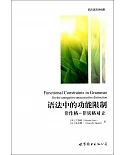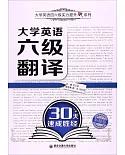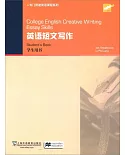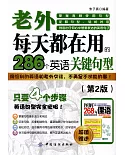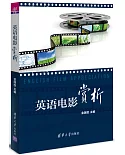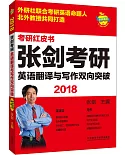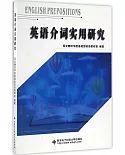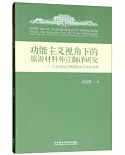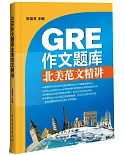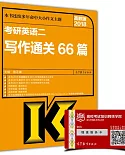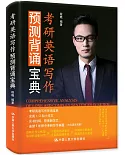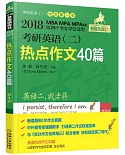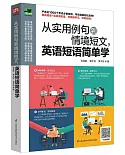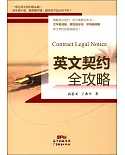隨着全球化的發展,英文求職信已經成為中國人求職擇業的一個重要組成部分。
《經濟管理學術文庫·其他類:英文求職信語體研究》以語體分析理論和語篇教學法為基礎,將定量分析與定性分析相結合,輔助計算機統計軟件,全面分析了中國人與外國人書寫的英文求職信中存在的異同,並重點揭示了引起差異的因素,進而總結出一封「地道』的英文求職信應當具有的語境特點、語言特征和語體結構。
最后,《經濟管理學術文庫·其他類:英文求職信語體研究》將理論研究運用到教學實踐中,舉例闡述了如何有效地引導中國學生寫出一封「合格」的英文求職信。
目錄
Introduction
0.1 Research Background
0.2 Research Questions
0.3 Purpose and Significance
0.4 Methodology
0.5 Organization of the Book
Chapter 1 Literature Review
1.1 Definitions of Genre
1.1.1 Systemic -Functional Perspective
1.1.2 ESP Perspective
1.1.3 New Rhetoric Perspective
1.2 Previous Studies on Job Application Letters
1.2.1 Related Studies Abroad
1.2.2 Related Studies in China
Chapter 2 Theoretical Framework
2.1 Approaches to Genre Analysis
2.1.1 Systemic -Functional Perspective
2.1.2 ESP Perspective
2.1.3 New Rhetoric Perspective
2.2 A Three -Space Model of This Study
Chapter 3 A Three - Space Analysis of English Job Application Letters
3.1 Social Space——Contextual Analyses
3.1.1 Context of Culture
3.1.2 Context of Situation
3.2 Social- Cognitive Space——Generic Structures Analyses
3.2.1 Generic Structures of English Job Application Letters by Native Writers
3.2.2 Generic Structures of English Job Application Letters by Chinese Writers
3.3 Textual Space——Linguistic Analyses
3.3.1 Linguistic Analyses of English Job Application Letters by Native Writers
3.3.2 Linguistic Analyses of English Job Application Letters by Chinese Writers
Chapter 4 A Contrastive Analysis of the Two Corpora
4.1 Generic Structures and Linguistic Features of the Two Corpora
4.1.1 Similarities and Differences of Generic Structures of the Two Corpora
4.1.2 Similarities and Differences of Linguistic Features of the Two Corpora
4.2 Underlying Causes of the Differences of the Two Corpora
4.2.1 Linguistic Factor——Native Language VS.Foreign Language
4.2.2 Social Factor——Low - Power Distance VS.High - Power Distance
4.2.3 Cultural Factor——Low - Context Culture VS.High - Context Culture
Chapter 5 Pedagogical Implications: from Theory to Practice
5.1 The Teaching Process
5.1.1 Building the Context
5.1.2 Modeling and Deeonstructing this Genre
5.1.3 Joint Construction of the Genre
5.1.4 Independent Construction of the Genre
5.1.5 Peer Assessment
5.1.6 Teacher Assessment
5.2 Instruction of Cultural Knowledge
5.2.1 Necessity and Significance
5.2.2 Definitions of Language and Culture
5.2.3 Mutual Impact of Language and Culture
5.2.4 Suggested Instruction Strategies
5.3 The Role of Teachers
5.3.1 Teachers as Language Learners
5.3.2 Teachers as Researchers
5.3.3 Teachers as Coaches
5.3.4 Teachers as Coordinators
Conclusion
Abbreviations
Appendices
Appendix 1: Corpus A & Corpus B
Appendix 2: WordSmith Tools Corpus A & Corpus B
Appendix 3 : Titles of Common Positions
Appendix 4: Names of Common Enterprises
Bibliography
Postscript
0.1 Research Background
0.2 Research Questions
0.3 Purpose and Significance
0.4 Methodology
0.5 Organization of the Book
Chapter 1 Literature Review
1.1 Definitions of Genre
1.1.1 Systemic -Functional Perspective
1.1.2 ESP Perspective
1.1.3 New Rhetoric Perspective
1.2 Previous Studies on Job Application Letters
1.2.1 Related Studies Abroad
1.2.2 Related Studies in China
Chapter 2 Theoretical Framework
2.1 Approaches to Genre Analysis
2.1.1 Systemic -Functional Perspective
2.1.2 ESP Perspective
2.1.3 New Rhetoric Perspective
2.2 A Three -Space Model of This Study
Chapter 3 A Three - Space Analysis of English Job Application Letters
3.1 Social Space——Contextual Analyses
3.1.1 Context of Culture
3.1.2 Context of Situation
3.2 Social- Cognitive Space——Generic Structures Analyses
3.2.1 Generic Structures of English Job Application Letters by Native Writers
3.2.2 Generic Structures of English Job Application Letters by Chinese Writers
3.3 Textual Space——Linguistic Analyses
3.3.1 Linguistic Analyses of English Job Application Letters by Native Writers
3.3.2 Linguistic Analyses of English Job Application Letters by Chinese Writers
Chapter 4 A Contrastive Analysis of the Two Corpora
4.1 Generic Structures and Linguistic Features of the Two Corpora
4.1.1 Similarities and Differences of Generic Structures of the Two Corpora
4.1.2 Similarities and Differences of Linguistic Features of the Two Corpora
4.2 Underlying Causes of the Differences of the Two Corpora
4.2.1 Linguistic Factor——Native Language VS.Foreign Language
4.2.2 Social Factor——Low - Power Distance VS.High - Power Distance
4.2.3 Cultural Factor——Low - Context Culture VS.High - Context Culture
Chapter 5 Pedagogical Implications: from Theory to Practice
5.1 The Teaching Process
5.1.1 Building the Context
5.1.2 Modeling and Deeonstructing this Genre
5.1.3 Joint Construction of the Genre
5.1.4 Independent Construction of the Genre
5.1.5 Peer Assessment
5.1.6 Teacher Assessment
5.2 Instruction of Cultural Knowledge
5.2.1 Necessity and Significance
5.2.2 Definitions of Language and Culture
5.2.3 Mutual Impact of Language and Culture
5.2.4 Suggested Instruction Strategies
5.3 The Role of Teachers
5.3.1 Teachers as Language Learners
5.3.2 Teachers as Researchers
5.3.3 Teachers as Coaches
5.3.4 Teachers as Coordinators
Conclusion
Abbreviations
Appendices
Appendix 1: Corpus A & Corpus B
Appendix 2: WordSmith Tools Corpus A & Corpus B
Appendix 3 : Titles of Common Positions
Appendix 4: Names of Common Enterprises
Bibliography
Postscript
網路書店
類別
折扣
價格
-
新書87折$251


